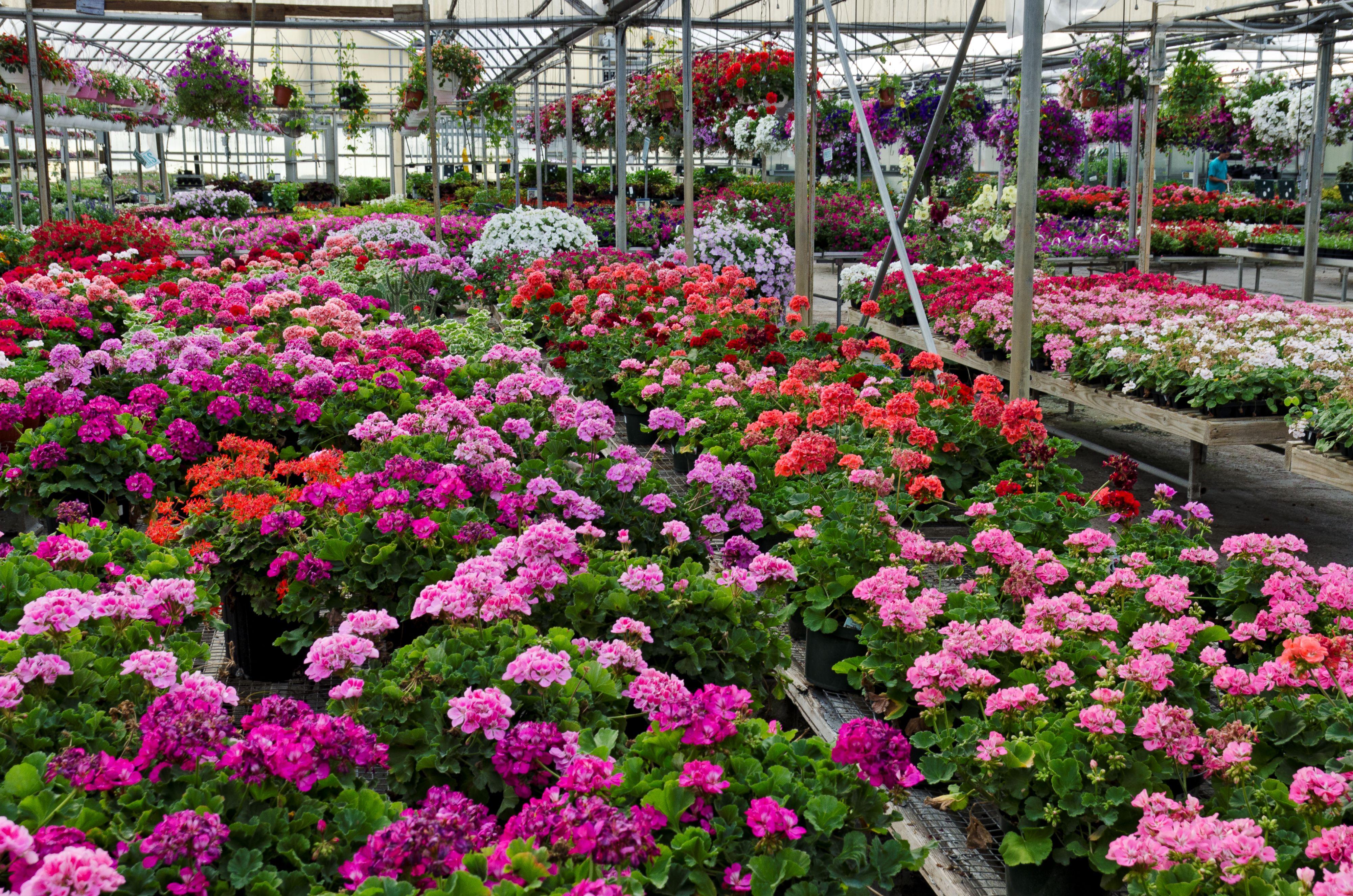As you browse the plant selections at your local garden center or nursery, you’ll likely find some small plants (often sold in six-pack containers) and larger plants in 1-gallon-size (or larger) containers. Which is better? The answer depends a lot on what you’re planting and when you’re planting it. Here are the pros and cons of various sizes of plants to consider so you can make the best buy.
- Leslie Hunter is the horticulture manager at the Greater Des Moines Botanical Garden in Iowa.
- Sandra Mao is an urban gardening personality on social media and the author of Vibrant Harvest.
Benefits of Small Plants
Generally, smaller plants will cost less, so if your budget Is limited, buying smaller plants—especially for annual plants—can be a smart way to go. “Annual flowers, herbs, and vegetables grow very quickly, so buying smaller plants is more economical,” says Leslie Hunter, Horticulture Manager at the Greater Des Moines Botanical Garden.
When shopping for container gardens, smaller plants can often be a good choice as well, because they tend to acclimate more quickly to new conditions compared to larger, more established plants.
“Because their roots are still developing, smaller plants tend to adjust more easily to new soil and confined spaces,” says Sandra Mao, author of Vibrant Harvest (December 2025). “This means they can quickly establish a healthy root system that fits well within the pot.”
Smaller plants tend to experience less transplant shock than larger plants when replanted into the garden as well, adds Mao. They’re also easier to handle, carry, and plant on your own, especially if you have any mobility issues.
When to Buy Large Plants
Perennials can take longer than annuals to establish themselves in your garden, so Hunter suggests you may want to buy a larger perennial plant to give it a head start. Similarly, if you’re purchasing woody shrubs or trees, purchasing a larger plant can help you enjoy their full impact in your landscape sooner.
If you need containers with instant impact for an upcoming event, you’ll likely want to choose a larger plant, Mao says. Larger plants can also more quickly provide privacy if you are planting them to screen out a neighbor’s yard or unappealing view.
Also consider when you’re planting because that can help you determine the best plant size for your needs. “One of the most common reasons to choose larger plants is if you’re planting late in the season,” Mao says. “If you’re behind schedule and still want to enjoy flowers and vegetables before the weather changes, larger plants can help you catch up.”
Consider Plant Types and Growth Rates
When deciding whether to buy a small or large plant, also consider each type of plant’s growth rate. Simply put, some plants grow faster than others so you may want to buy a larger plant if it’s a slow grower and you're in a hurry.
Herbs
When buying slower-growing perennial herb plants, such as rosemary, thyme, and bay laurel, Mao recommends buying these as larger plants so you’ll be able to harvest sooner. With faster-growing annual herbs like basil and dill, you could opt to start with smaller plants or even seeds and still get a harvest relatively quickly.
Shrubs
Some shrubs are especially good to buy in larger sizes because they will grow more slowly. “Hydrangeas and boxwood often take several years to fill out if started from small plants,” Mao says. Installing larger plants will make a bigger impact in your garden sooner.
Climbing Plants
Mao recommends opting for larger sizes when buying climbing plants. “For climbing plants and vines like jasmine, clematis, or passionflower, starting with a larger plant helps them establish faster and begin climbing sooner,” Mao says. “This is particularly helpful when you’re trying to cover a trellis, fence, or wall.”
Trees
While trees are generally sold in larger containers than most perennials and annuals, you can get away with buying smaller, less expensive trees if they are fast-growers. You’ll still enjoy their focal-point status in the garden relatively soon. “Certain trees grow quickly, like arborvitae or maples, so buying a 5 to 10-gallon plant as opposed to a more expensive ball and burlap tree may be a better choice,” Hunter says.
Vegetables
Though most vegetable plants grow quickly from seed or small transplants, if you’re getting your vegetable garden started later than you had hoped, larger plants can be a good choice. This is especially true for warm-season varieties that require a longer growing period, such as tomatoes, peppers, and eggplants, Mao says. You’ll have a better change of enjoying a harvest before temperatures dip too low.
Blaine Moats
Inspect Your Plants
No matter what size of plant you’re buying, be sure to check them over carefully before purchasing them. “It’s always good to inspect not only the health of the green side, but also the roots,” Hunter says.
That’s because plants can become root-bound if they are kept in their container too long, which can impact their health even after you replant them into your garden bed or container. This is especially likely for smaller plants, which are usually sold in very small containers. If you see roots circling at the bottom of the pot or sticking out the hole at the bottom, gently loosen the roots before planting. If plants are extremely root-bound. It may be better to opt for a larger plant in a bigger pot.



